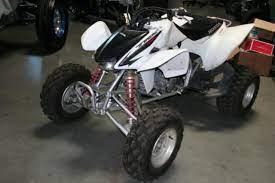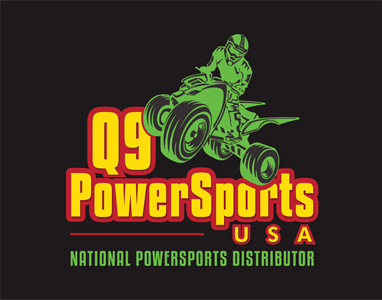
What to Check Out on a Used ATV Before You Buy It
Q9powersportsusa.com StaffShare
Thinking about buying a used ATV, make Sure to check it out
Buying a used all-terrain vehicle (ATV) can be an exciting and cost-effective option for outdoor enthusiasts. However, it's crucial to thoroughly inspect the vehicle before making a purchase. In this article, we will guide you through the essential checkpoints to consider when checking out a used ATV.
1. Exterior Condition
Start by inspecting the overall exterior condition of the ATV. Look for any visible signs of damage, such as dents, scratches, or rust. Check the tires for tread wear and ensure they are in good condition. Additionally, check the suspension for any signs of leakage or damage. Any significant issues with the exterior could indicate potential problems with the ATV's performance or maintenance history.
2. Engine and Mechanical Components
The ATV's engine is the heart of the vehicle, so it's crucial to inspect it thoroughly. Begin by checking the oil levels and condition. Milky or foamy oil could indicate water contamination, which is a red flag. Look for any oil leaks, unusual noises, or smoke coming from the exhaust. Start the ATV and listen for any knocking or rattling sounds. Test the brakes, throttle, and clutch to ensure they are functioning properly. Don't forget to inspect the drive belt and chain, as well as the cooling system for any signs of damage or leaks. It's important to have a good understanding of the mechanical condition of the ATV to avoid costly repairs down the road.
3. Electrical System
Inspect the ATV's electrical system, including the battery, lights, and switches. Check if all the lights are working correctly, including the headlights, brake lights, and turn signals. Test the electric start and make sure all switches and controls are operational. Faulty electrical components can lead to frustrating issues and may require expensive repairs. Taking the time to examine the electrical system can save you from future headaches.
4. Frame and Chassis
Thoroughly examine the frame and chassis of the ATV. Look for any signs of cracks, bends, or repairs. A damaged frame could compromise the overall safety and durability of the vehicle. Pay attention to the welds and ensure they are intact. Additionally, check for rust or corrosion, especially in areas exposed to moisture. A solid and well-maintained frame is essential for a reliable and long-lasting ATV.
5. Suspension and Steering
Check the ATV's suspension and steering components. Test the suspension by bouncing each corner of the ATV and listen for any unusual noises. Ensure the suspension is smooth and responsive. Check the steering by turning the handlebars from lock to lock, making sure there is no excessive play or stiffness. Faulty suspension or steering can affect the handling and control of the ATV, compromising your safety.
6. Test Drive
If possible, take the ATV for a test drive. This will give you a better understanding of how the vehicle performs and handles. Pay attention to the overall performance, acceleration, braking, and steering. Test the ATV on different terrains to assess its capabilities. Any issues or abnormalities should be addressed before making a purchase. Keep in mind that some sellers may be hesitant to allow a test drive, so be prepared to negotiate or request alternative ways to evaluate the ATV's performance.
7. Documentation and History
Ask the seller for any documentation related to the ATV, such as maintenance records, repair receipts, or the owner's manual. This information can provide valuable insights into the ATV's maintenance history and any previous issues it may have had. Additionally, consider running a vehicle history report to check for any reported accidents, liens, or theft records. Having a clear understanding of the ATV's background can help you make an informed decision.
8. Price and Negotiation
Once you have thoroughly inspected the ATV and are satisfied with its condition, it's time to discuss the price with the seller. Research the market value of similar ATVs to have a benchmark for negotiation. Take into account any repairs or maintenance that may be required in the near future when determining the fair price. Be prepared to negotiate and don't hesitate to walk away if the seller is unwilling to meet your reasonable expectations.
9. Additional Considerations
While the above checkpoints cover the essential aspects to inspect, there are a few additional considerations to keep in mind:
- Brand and Model: Research the reputation and reliability of the ATV's brand and model. Some brands are known for their durability and performance, while others may have a history of issues.
- Seller Reputation: If buying from a private seller, consider their reputation and credibility. It's always beneficial to purchase from someone who has taken good care of the ATV and has a positive track record.
- Warranty or Guarantee: Inquire if the ATV comes with any warranty or guarantee. This can provide you with additional peace of mind, knowing that the seller stands behind the vehicle's condition.
Conclusion
Before buying a used ATV, it's essential to thoroughly inspect various aspects of the vehicle. By following these checkpoints and considering additional factors, you can ensure that you are making an informed decision and investing in a reliable ATV for your outdoor adventures. Remember, it's always better to spend extra time and effort upfront to avoid costly repairs or disappointments in the long run. Happy ATV hunting!
